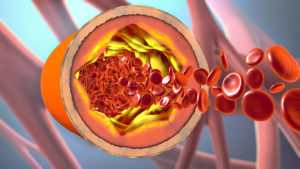Peripheral Vascular Disease
 Peripheral vascular disease (PVD) is a blood circulation disorder in which blood vessels are too narrow, block, or spasm in arteries and veins outside of the heart and brain.
Peripheral vascular disease (PVD) is a blood circulation disorder in which blood vessels are too narrow, block, or spasm in arteries and veins outside of the heart and brain.
CAUSES
The typical cause of PVD is atherosclerosis. This is the buildup of plaque on the artery walls which reduces how much blood can travel to the limbs. Other less common causes are infection, injury to the arms or legs, and the abnormal anatomy of ligaments or muscles.
SYMPTOMS
People with PVD are usually symptom-free. Those that have symptoms will likely experience leg pain brought on by exercise. Other, less common symptoms of PVD include:
- Weak pulse in legs and feet
- Changes in the skin (temperature, texture, and color)
- Hair loss usually on the legs
- Gangrene
- Weak, numb, or heavy muscles
- Impotence
- Wounds that won’t clot near pressure points
- Pain while resting
- Pale legs when elevated
- Thick clear toenails
- Restricted mobility
*Stock photographs and artwork are for illustrative purposes only. This article contains general information about medical conditions and treatments. The information is not advice, and should not be treated as such. You must not rely on this article as an alternative to medical advice from your doctor or other healthcare providers.





